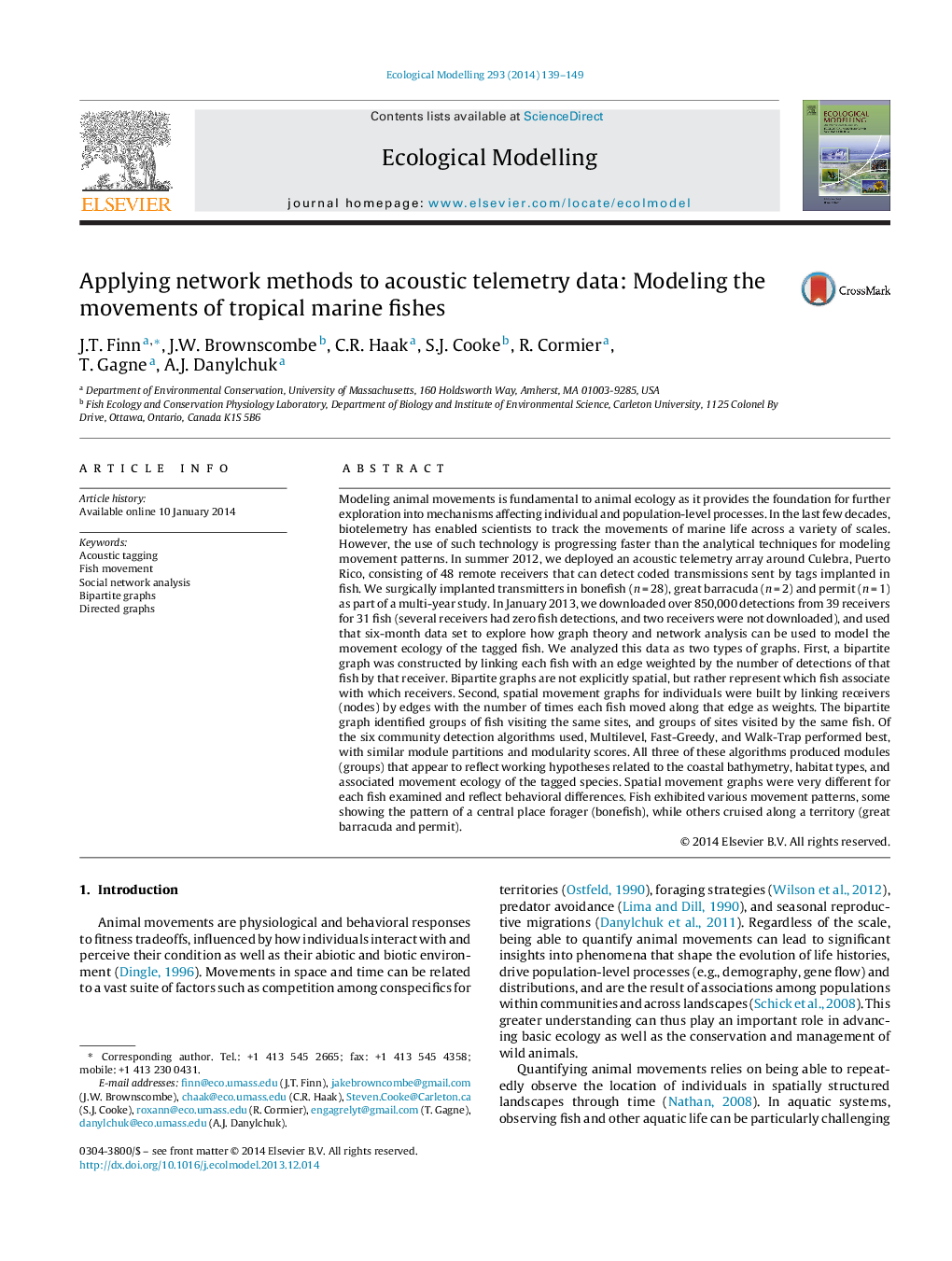| کد مقاله | کد نشریه | سال انتشار | مقاله انگلیسی | نسخه تمام متن |
|---|---|---|---|---|
| 4375799 | 1617453 | 2014 | 11 صفحه PDF | دانلود رایگان |
• Over 850,000 detections from 26 fish at 39 receivers over 6 months were analyzed.
• Groups (or modules) of fish and receivers were identified using ‘community detection’ methods on bipartite graphs.
• Spatial graphs depicted movements of individual fish between receivers.
Modeling animal movements is fundamental to animal ecology as it provides the foundation for further exploration into mechanisms affecting individual and population-level processes. In the last few decades, biotelemetry has enabled scientists to track the movements of marine life across a variety of scales. However, the use of such technology is progressing faster than the analytical techniques for modeling movement patterns. In summer 2012, we deployed an acoustic telemetry array around Culebra, Puerto Rico, consisting of 48 remote receivers that can detect coded transmissions sent by tags implanted in fish. We surgically implanted transmitters in bonefish (n = 28), great barracuda (n = 2) and permit (n = 1) as part of a multi-year study. In January 2013, we downloaded over 850,000 detections from 39 receivers for 31 fish (several receivers had zero fish detections, and two receivers were not downloaded), and used that six-month data set to explore how graph theory and network analysis can be used to model the movement ecology of the tagged fish. We analyzed this data as two types of graphs. First, a bipartite graph was constructed by linking each fish with an edge weighted by the number of detections of that fish by that receiver. Bipartite graphs are not explicitly spatial, but rather represent which fish associate with which receivers. Second, spatial movement graphs for individuals were built by linking receivers (nodes) by edges with the number of times each fish moved along that edge as weights. The bipartite graph identified groups of fish visiting the same sites, and groups of sites visited by the same fish. Of the six community detection algorithms used, Multilevel, Fast-Greedy, and Walk-Trap performed best, with similar module partitions and modularity scores. All three of these algorithms produced modules (groups) that appear to reflect working hypotheses related to the coastal bathymetry, habitat types, and associated movement ecology of the tagged species. Spatial movement graphs were very different for each fish examined and reflect behavioral differences. Fish exhibited various movement patterns, some showing the pattern of a central place forager (bonefish), while others cruised along a territory (great barracuda and permit).
Journal: Ecological Modelling - Volume 293, 10 December 2014, Pages 139–149
